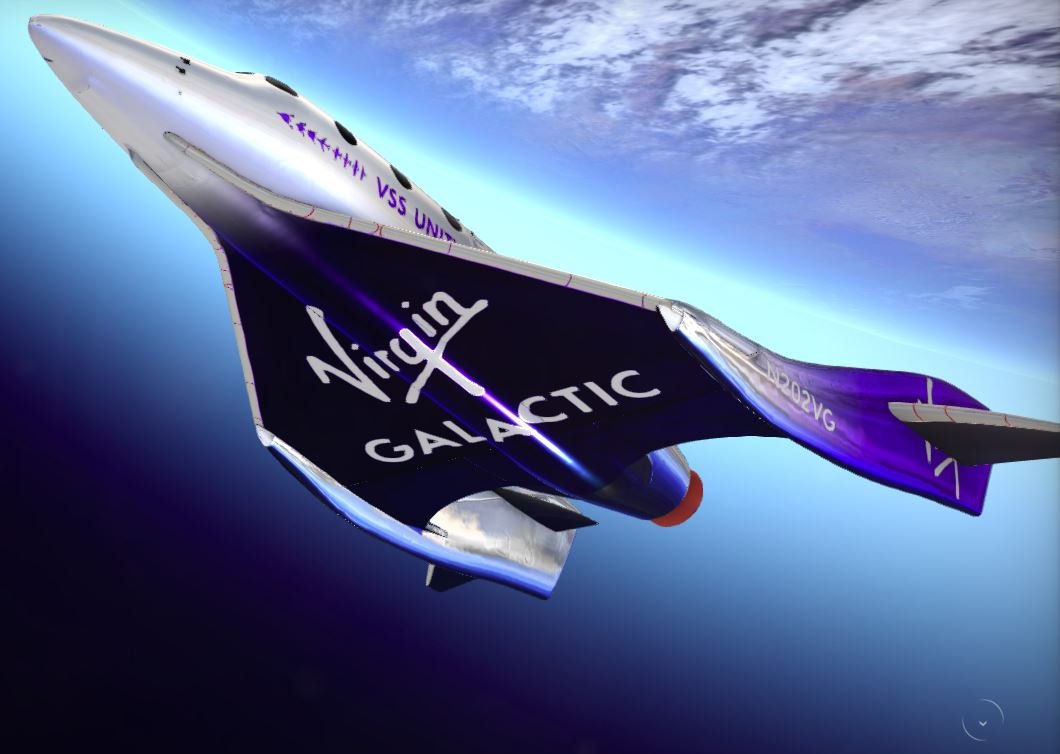
Imagine gazing out of a window and seeing Earth from the vast, inky depths of space. Space tourism, once the stuff of science fiction, is rapidly becoming a reality. With advancements in technology and the rise of private companies specializing in commercial space travel, taking a trip to outer space is no longer reserved for astronauts or billionaires. In this post, we’ll explore the exciting world of space tourism, dive into who’s leading the race to make space travelaccessible, and what the future holds for adventurous travelers eager to take off into the cosmos.
We’ll take a deep dive into the companies pioneering space tourism, such as SpaceX, Blue Origin, and Virgin Galactic, which are driving innovation and pushing boundaries in this fast-growing market. So, if you’ve ever fantasized about leaving Earth’s atmosphere and embarking on an out-of-this-world adventure, keep reading to learn more about the future of space vacations.
The Rise of Space Tourism: A New Era in Travel
For decades, space exploration was the exclusive domain of government agencies like NASA and Roscosmos, and space travel was viewed as a scientific mission, rather than a recreational pursuit. However, the landscape has shifted. In recent years, private companies have begun developing commercial spaceflight programs designed to carry non-professional astronauts and even tourists into space. Space tourism companies such as SpaceX, Blue Origin, and Virgin Galactic are pioneering this new marketplace, creating a once-in-a-lifetime experience for those who dare to dream of leaving Earth behind.
The space tourism industry is still in its infancy, but make no mistake—it’s growing fast. With billionaires like Elon Musk, Jeff Bezos, and Richard Branson investing heavily in space technologies, this once-unfathomable prospect of ordinary people traveling into space is inching closer to reality.
But what exactly does space tourism entail? Is it really within reach for regular people? How much does it cost, and what can travelers expect from their time in space? More importantly, who are the companies making space tourism a reality, and how do they differ from one another? Let’s dive into the details.
What is Space Tourism?
At its core, space tourism refers to the practice of sending private individuals—rather than trained astronauts—on spaceflights for recreational purposes. These flights are offered by private companies rather than government space agencies, and they vary in scope. Some companies offer suborbital flights, where passengers experience a brief trip to the edge of space before returning to Earth, while others are aiming to provide orbital flights that allow passengers to stay in space for longer periods and even orbit the planet.
This distinction between suborbital and orbital flights is key to understanding the current state of space tourism:
- Suborbital flights: Passengers travel to the edge of space, around 62 miles (100 kilometers) above Earth, crossing the internationally recognized boundary known as the Kármán line. These flights offer a few minutes of weightlessness and stunning views of the planet before re-entering the atmosphere and landing back on Earth. The experience lasts less than an hour, but it promises unforgettable moments as passengers get a taste of space without leaving Earth’s gravity well.
- Orbital flights: These flights go beyond suborbital trips, entering full orbit around Earth. Passengers aboard an orbital flight remain in space for longer periods, often several days, and may circle the planet multiple times before re-entering the atmosphere. Orbital flights offer a more immersive experience, but they are also more expensive and require more preparation and training.
Currently, suborbital flights are the most common offering from companies developing space tourism programs, but orbital flights are on the horizon as well.
Who Are the Pioneers of Space Tourism?
Several companies are at the forefront of making space tourism a reality, each with its own unique vision for the future of space travel. Let’s explore the top contenders in the space tourism race and what sets them apart.
1. SpaceX: The Future of Orbital Space Tourism
When discussing space tourism, one of the most well-known companies is Elon Musk’s SpaceX. Founded in 2002 with the ambitious goal of reducing the cost of space travel and eventually facilitating the colonization of Mars, SpaceX has rapidly become one of the most important players in the industry.
While SpaceX’s primary focus has been on building reliable, reusable rockets for commercial and governmental clients, the company is also positioning itself to become a leader in space tourism. SpaceX’s Starship, a fully reusable spacecraft designed to carry both cargo and passengers to space, is poised to play a significant role in the future of space tourism. The Starship has the potential to carry civilians on orbital flights around Earth, trips to the Moon, and even voyages to Mars in the future.
In 2021, SpaceX made history with Inspiration4, the first all-civilian mission into orbit. The mission, which orbited Earth for three days, was a significant milestone for space tourism, showcasing SpaceX’s ability to send private individuals into space. SpaceX is also planning missions to the Moon with paying customers, including Japanese billionaire Yusaku Maezawa, who intends to fly around the Moon with a crew of artists, musicians, and filmmakers as part of the #dearMoon project.
While SpaceX is focused on developing orbital tourism options, the cost of such experiences remains high, with ticket prices estimated to be in the tens of millions of dollars. However, as the technology develops and more missions are completed, SpaceX hopes to reduce the cost of space travel and make it more accessible to a broader audience.
2. Blue Origin: Opening the Gateway to Suborbital Space Travel
Jeff Bezos, founder of Amazon, is also aiming for the stars with his space tourism company, Blue Origin. Founded in 2000, Blue Origin is focused on making space travel more affordable and frequent. The company’s New Shepard rocket, named after astronaut Alan Shepard, has already begun sending paying customers to the edge of space, providing them with a few minutes of weightlessness and awe-inspiring views of Earth.
Blue Origin’s suborbital flights offer passengers the chance to experience microgravity and see Earth from the edge of space. The experience lasts just over 10 minutes, but during that time, passengers float freely inside the capsule and witness the curvature of the Earth from a unique vantage point. The company’s long-term goal is to create a future where “millions of people are living and working in space,” and their ongoing development of the New Glenn orbital rocket could pave the way for longer and more immersive space experiences.
In July 2021, Jeff Bezos himself took part in Blue Origin’s first crewed spaceflight aboard the New Shepard rocket, along with three other passengers, marking a significant milestone in the company’s journey to make suborbital space tourisma regular occurrence.
Ticket prices for Blue Origin’s flights are still under wraps, but estimates suggest they will cost in the range of $200,000 to $500,000. As Blue Origin continues to refine its technology and increase the frequency of flights, these prices may become more accessible to the general public.
3. Virgin Galactic: A Vision for Accessible Space Tourism
Sir Richard Branson’s Virgin Galactic has long been a major player in the space tourism race. Unlike SpaceX and Blue Origin, which are focused on both orbital and suborbital flights, Virgin Galactic’s primary mission is to make suborbital spaceflights accessible to the public.
Virgin Galactic’s SpaceShipTwo is a spacecraft designed to carry passengers to the edge of space, where they can experience several minutes of weightlessness and breathtaking views of Earth before returning to the planet. The spacecraft is carried into the sky by a mothership, which releases it at a high altitude. From there, the spacecraft ignites its rocket engine, sending passengers on a short but exhilarating journey into space.
Virgin Galactic’s space tourism program is designed to offer a luxury experience, with an emphasis on making space travel accessible to more people. In July 2021, Richard Branson himself took part in a test flight, demonstrating the company’s readiness to begin offering regular flights to paying customers.
Tickets for Virgin Galactic’s spaceflights are currently priced at around $450,000, with hundreds of people already signed up to be among the first to experience suborbital space travel. Virgin Galactic’s goal is to make space tourism more affordable over time, with the long-term vision of sending thousands of people into space each year.
What Can Space Tourists Expect?
Space tourism, while exciting, is still in its infancy. Each company is working to refine the experience, but here’s what you can generally expect if you’re dreaming of one day heading to the stars.
- Suborbital vs. Orbital Flights: Most current space tourism offerings are suborbital, meaning you’ll reach the edge of space but won’t enter orbit around the Earth. These flights typically last between 10 and 15 minutes, providing a brief but unforgettable experience. Orbital flights, like those SpaceX is developing, will involve spending more extended periods in space, even potentially orbiting the planet.
- Cost of a Space Ticket: For now, the cost of space tourism is far from affordable for most. Tickets for a Virgin Galactic flight are priced at around $450,000, while Blue Origin’s prices are still undisclosed but expected to be in the same range. Orbital flights with SpaceX will be even more expensive, reaching into the tens of millions. However, as the technology develops, prices are expected to decrease, bringing space tourism within reach of more people.
- Training: Before embarking on a spaceflight, tourists will need to undergo training. This includes learning how to handle zero-gravity environments, understanding the safety protocols, and preparing for the physical and mental stresses of space travel.
The Future of Space Tourism: What’s Next?
With successful test flights completed and some paying customers already flying, the future of space tourism looks bright. As more companies enter the space race, competition is expected to drive innovation, leading to more frequent and affordable flights. Moreover, discussions around space hotels and lunar tourism are already gaining traction. The future of commercial space travel might include staying at a hotel orbiting Earth or booking a vacation on the Moon.
Conclusion: Is Space Travel the Next Big Thing?
Space tourism is poised to revolutionize the travel industry. Companies like SpaceX, Blue Origin, and Virgin Galactic are competing to make space travel not only a reality but a popular vacation destination for thrill-seekers. While the cost remains prohibitive for most, the prospect of more accessible space travel is on the horizon. If you’ve ever dreamed of floating weightlessly while staring down at the Earth, space tourism might be the ultimate adventure of the future.
As technology advances and the industry grows, space tourism will no longer be a luxury for the ultra-wealthy but a viable option for anyone seeking the most extraordinary travel experience imaginable. The question is: Are you ready to blast off?













